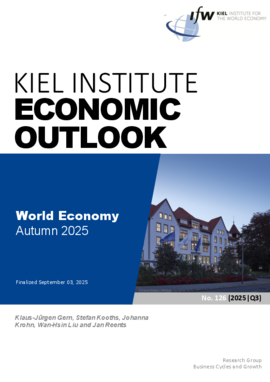Authors
Publication Date
Related Topics
Business Cycle World
The global economy has so far proved robust in the face of unprecedented economic uncertainty. Recently, a number of countries, including the EU, have concluded trade agreements with the United States. These agreements increase planning security by providing a framework for international trade. At the same time, however, they cement high tariff levels for most goods. In the coming months, the higher tariffs are likely to increasingly slow down production and international trade, especially as the deliveries brought forward in recent months to avoid tariffs are now missing. In the United States, the tariffs are expected to be passed on to consumer prices for the most part, causing inflation to accelerate again and consumer spending to slow down further. The slowdown in the global economy will be reflected primarily in lower growth next year. For the current year, we expect only a slight reduction in global output growth – measured on the basis of purchasing power parities – from 3.3 percent to 3.0 percent, and for 2026 we expect a decline to just 2.8 percent. We have raised our forecast for this year by 0.1 percentage points compared with the June forecast due to the unexpectedly robust development in the summer half-year, and reduced it by 0.1 percentage points for the coming year. In 2027, the global economy is likely to gradually gain momentum. However, at 3.0 percent, growth remains low by historical standards.









